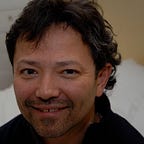Vitality and the Caves at Lascaux
We require a philosophy that illuminates human experience.
The cave paintings at Lascaux, the great bulls of the prehistoric hunters and gatherers, are among the first works of art of the human species.
Here, art and symbol come together as testimony to man’s harmony with this world. The bulls have mythological qualities, but are of an animistic spirituality of the here and now, and not prayers to a transcendent god.
The magic and mythology of prehistoric man spurred human beings into action, caused them to be at one with their environment.
The cave paintings are living symbols in the immanent field, a precursor to a pantheistic view of a god that permeates the diversity of all things in nature. The paintings empower prehistoric man to participate in that diversity.
Picasso, upon leaving the caves at Lascaux, famously commented that we have learned nothing since that time.
We require a philosophy aimed at bringing us back to the immediacy of reality, breaking down the walls of separation, the transcendence of subjectivity and abstraction, in aid of spurring us into action.
To become immersed once again in our environment and empowered to create change.
With Nietzsche on his shoulder, Deleuze implores us to seize the active forces within, overflowing with the desire to create, and change our lives. To access the power of difference-in-itself that transforms and makes anything possible.
I hope you enjoyed this article. Thanks for reading!
Tomas
Please join my email list here or email me at tomas@tomasbyrne.com.
Excerpt from my forthcoming book, Becoming: A Life of Pure Difference (Gilles Deleuze and the Philosophy of the New) Copyright © 2021 by Tomas Byrne. Learn more here.
